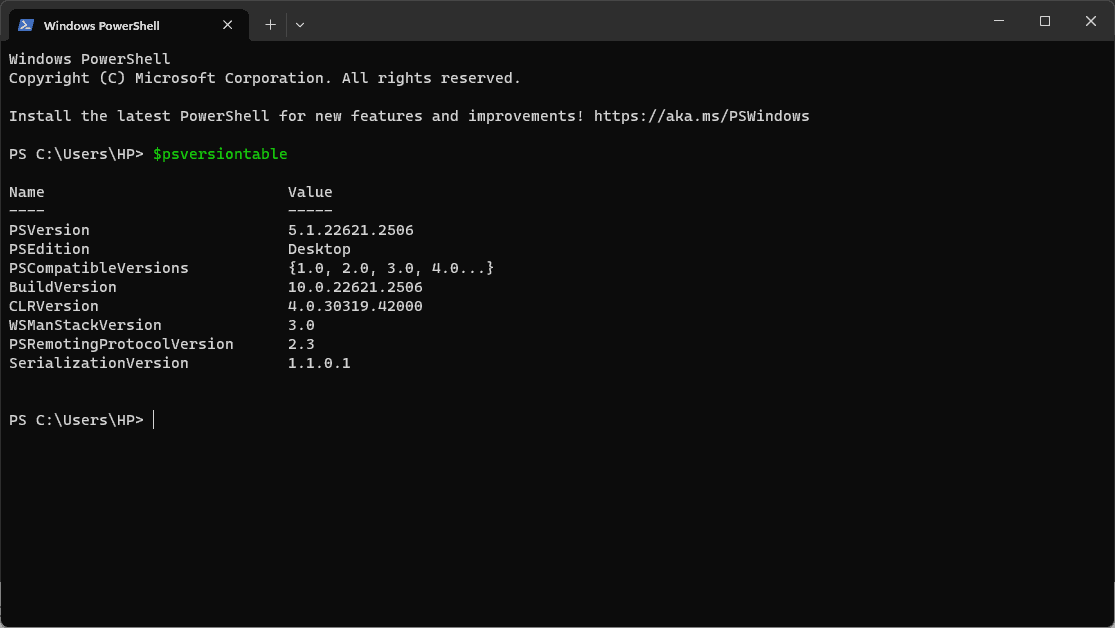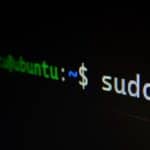Windows PowerShell opening on startup can be a puzzling issue for many users. This automated launch often causes confusion and may slow down the boot process. To stop PowerShell from opening at startup, users can disable it in Task Manager or remove it from the Startup folder.
PowerShell is a powerful tool for system administrators and advanced users, but its automatic startup isn’t always necessary. There are several reasons why PowerShell might open when Windows boots. These can range from scheduled tasks to malware infections.
Fixing this issue is typically straightforward. Users can check for malware and remove unwanted startup items. For those who need PowerShell scripts to run at startup, there are methods to do so safely without leaving the console window open.
| Cause | Solution |
|---|---|
| Startup Item | Disable in Task Manager |
| Malware | Run antivirus scan |
| Scheduled Task | Check Task Scheduler |
| Script | Modify execution method |
Troubleshooting PowerShell Startup Issues
Is PowerShell constantly popping up on your Windows startup? This can be annoying and disruptive. But don’t worry, there are several ways to troubleshoot and fix this issue.
1. Check Your Startup Apps
- Open Task Manager: Press Ctrl + Shift + Esc to open Task Manager.
- Go to the Startup tab: This tab lists all the programs that launch when your computer starts.
- Disable PowerShell: If you see PowerShell in the list, right-click on it and select “Disable.”
2. Scan for Malware
- Run a full system scan: Malware can sometimes cause PowerShell to open automatically. Use your antivirus software to perform a thorough scan of your computer.
3. Inspect Scheduled Tasks
- Open Task Scheduler: Search for “Task Scheduler” in the Windows search bar.
- Review tasks: Look for any tasks that might be triggering PowerShell to run on startup. Check the “Triggers” tab for each task to see when it’s scheduled to run.
- Disable or modify tasks: If you find any suspicious tasks, you can disable them or modify their triggers to prevent PowerShell from opening.
4. Check for PowerShell Scripts in Startup Folders
- Locate the Startup folder: There are two Startup folders in Windows: one for your user account and one for all users. You can access them by typing
shell:startup(for your user account) orshell:common startup(for all users) in the Run dialog box (Windows key + R). - Inspect for PowerShell scripts: Look for any PowerShell script files (.ps1) in these folders. These scripts might be causing PowerShell to launch on startup.
- Remove or modify scripts: If you find any unwanted scripts, you can remove them from the Startup folder or modify them to prevent them from running automatically.
5. Review PowerShell Profile Settings
- Check your PowerShell profile: PowerShell has a profile script that runs every time you open a new PowerShell session. This script might contain commands that are causing the issue.
- Locate the profile script: Type
$PROFILEin PowerShell to see the location of your profile script. - Edit the script: Open the profile script in a text editor and look for any suspicious commands. Remove or modify them as needed.
Table: Troubleshooting PowerShell Startup Issues
| Issue | Possible Cause | Solution |
|---|---|---|
| PowerShell opens on startup | PowerShell listed in startup apps | Disable PowerShell in Task Manager |
| PowerShell opens on startup | Malware | Run a full system scan |
| PowerShell opens on startup | Scheduled task | Disable or modify the task in Task Scheduler |
| PowerShell opens on startup | PowerShell script in Startup folder | Remove or modify the script |
| PowerShell opens on startup | Commands in PowerShell profile | Edit the profile script |
PowerShell Basics
PowerShell is a powerful command-line tool and scripting language built into Windows. It’s used for automating tasks, managing system configurations, and much more. While it can be intimidating for beginners, learning some basic PowerShell commands can be helpful for troubleshooting and managing your Windows computer.
Here are a few resources to get you started:
- Microsoft’s PowerShell Documentation: This official documentation provides comprehensive information about PowerShell commands, syntax, and scripting.
- Online Tutorials: There are many online tutorials and courses available that can teach you the basics of PowerShell.
- PowerShell Community Forums: If you have specific questions or need help with a particular PowerShell issue, you can find support in online forums and communities.
Understanding PowerShell and Its Integration with Windows
PowerShell has become a key tool for Windows system administration and automation. It offers powerful scripting capabilities and deep integration with Windows operating systems.
Evolution of PowerShell
PowerShell started as a Windows-only scripting language and command-line shell. Microsoft released version 1.0 in 2006. It aimed to improve upon the limited capabilities of the traditional Command Prompt (cmd.exe).
PowerShell 3.0 brought major enhancements in 2012. These included improved performance and over 2,300 cmdlets for system management. Microsoft made PowerShell open-source in 2016 with version 6.0. This allowed it to run on macOS and Linux.
The latest versions continue to expand cross-platform support. PowerShell now works seamlessly across Windows, macOS, and Linux environments. This makes it invaluable for managing diverse IT infrastructures.
How PowerShell Differs from CMD
PowerShell offers significant advantages over the older Command Prompt (CMD). Here’s a comparison of key features:
| Feature | PowerShell | CMD |
|---|---|---|
| Object-based | Yes | No |
| Scripting language | Advanced | Basic |
| Cross-platform | Yes | Windows only |
| .NET integration | Deep | Limited |
| Remote management | Built-in | Limited |
PowerShell uses cmdlets instead of text-based commands. These provide consistent naming and functionality. It also supports more complex data types and structures. This allows for more sophisticated scripting and automation.
Unlike CMD, PowerShell can directly interact with Windows APIs and .NET objects. This gives administrators granular control over system components. PowerShell’s remoting capabilities enable easy management of remote systems.
Configuring PowerShell to Run at Startup
PowerShell scripts can be set to run automatically when a computer starts up. This enables automation of tasks and system configurations without manual intervention. There are several methods to achieve this, each with its own advantages.
PowerShell Startup Folder Method
The startup folder offers a simple way to run PowerShell scripts at system boot. To use this method:
- Press Win + R and type “shell” to open the startup folder
- Create a new batch file in this folder
- Add the following command to the batch file:
powershell.exe -ExecutionPolicy Bypass -File "C:\Path\To\Your\Script.ps1" - Save the file with a .cmd extension
This approach works for individual user accounts. For scripts that need to run for all users, use the all users startup folder instead.
Task Scheduler Approach
Task Scheduler provides more control over when and how scripts run:
- Open Task Scheduler
- Click “Create Basic Task”
- Name the task and set it to trigger at startup
- Choose “Start a program” as the action
- Enter “powershell.exe” as the program
- Add “-ExecutionPolicy Bypass -File C:\Path\To\Your\Script.ps1” in the arguments field
This method allows for additional options like running with elevated privileges or specifying conditions for the task to run.
Group Policy and Registry Tweaks
For enterprise environments, Group Policy offers a centralized way to manage startup scripts:
- Open Group Policy Editor
- Navigate to Computer Configuration > Windows Settings > Scripts
- Double-click on Startup
- Add the PowerShell script here
Registry modifications can also be used to run scripts at startup:
- Open Registry Editor
- Go to HKEY_LOCAL_MACHINE\SOFTWARE\Microsoft\Windows\CurrentVersion\Run
- Create a new String Value
- Set its data to “powershell.exe -ExecutionPolicy Bypass -File C:\Path\To\Your\Script.ps1”
This method requires caution as incorrect registry edits can cause system issues.
| Method | Pros | Cons |
|---|---|---|
| Startup Folder | Easy to set up | Limited to user context |
| Task Scheduler | Flexible scheduling | More complex setup |
| Group Policy | Centralized management | Requires domain environment |
| Registry | System-wide effect | Potential for system instability |
PowerShell Scripting Essentials for Startup
PowerShell scripts can automate tasks at system startup. Proper configuration and execution policies are crucial for seamless operation. Understanding parameters and environment setup enhances script functionality.
Basic Scripts and Execution Policy
PowerShell scripts are text files with a .ps1 extension. To run a script at startup, place it in the Windows startup folder. The default path is:
C:\Users\[Username]\AppData\Roaming\Microsoft\Windows\Start Menu\Programs\Startup
Execution policy affects script running. By default, Windows restricts script execution. To change this:
- Open PowerShell as administrator
- Run: Set-ExecutionPolicy RemoteSigned
This allows local scripts to run without digital signatures.
A basic startup script might look like:
# Log startup time
$startupTime = Get-Date
Add-Content -Path "C:\StartupLog.txt" -Value "System started at $startupTime"
# Run cleanup tasks
Remove-Item -Path "C:\Temp\*" -Recurse -Force
Common Parameters and Environment Configuration
PowerShell scripts accept parameters for flexible execution. Common startup script parameters include:
- FilePath: Specifies script location
- WindowStyle: Controls PowerShell window visibility
Environment variables set the script’s context. Key variables:
- $env:COMPUTERNAME: Current computer name
- $env:USERNAME: Logged-in user
A parameter-enabled script example:
param(
[string]$LogPath = "C:\Logs\",
[switch]$Verbose
)
$logFile = Join-Path $LogPath "StartupLog.txt"
$message = "Startup script executed by $env:USERNAME on $env:COMPUTERNAME"
if ($Verbose) {
Write-Host $message
}
Add-Content -Path $logFile -Value $message
This script accepts a custom log path and verbosity flag. It uses environment variables to log details.
| Parameter | Description | Example |
|---|---|---|
| FilePath | Script location | -FilePath “C:\Scripts\Startup.ps1” |
| WindowStyle | Window visibility | -WindowStyle Hidden |
Proper use of parameters and environment settings enhances script flexibility and functionality at startup.
Security and Troubleshooting
PowerShell on startup can raise security concerns and technical issues. Properly managing administrative privileges and addressing errors are crucial for maintaining system integrity and performance.
Managing Administrative Privileges
PowerShell’s administrative capabilities require careful handling. Users should run PowerShell as an administrator only when necessary. This practice helps prevent unauthorized changes to system settings.
To manage privileges:
- Right-click the PowerShell icon
- Select “Run as administrator”
- Enter admin credentials when prompted
For added security, users can create a separate admin account. This approach limits exposure of privileged access.
| Action | Security Level |
|---|---|
| Standard User | Low |
| Run as Admin | Medium |
| Separate Admin Account | High |
Dealing with Errors and Unintended Consequences
PowerShell errors can stem from various sources. Common issues include script execution policy restrictions and syntax errors.
To troubleshoot:
- Check the error message for specifics
- Verify script permissions
- Review syntax carefully
Windows Security Troubleshooter can help resolve some PowerShell-related problems. Users can access this tool through Windows Settings.
For persistent issues, consider using the Deployment Image Servicing and Management (DISM) tool. This advanced option can repair Windows components affecting PowerShell.
If PowerShell keeps opening at startup unexpectedly, check the Startup folder and Task Manager. Remove any unwanted PowerShell entries to prevent automatic launches.
Frequently Asked Questions
PowerShell startup issues can be complex. Users often have questions about running scripts, stopping automatic launches, and security concerns. Here are some common queries and their solutions.
How can I run a PowerShell script on Windows startup?
To run a PowerShell script at startup, create a shortcut to the script in the Windows Startup folder. Right-click the script file and select “Create shortcut”. Move the shortcut to C:\Users\Username\AppData\Roaming\Microsoft\Windows\Start Menu\Programs\Startup.
Another method is to use Task Scheduler. This allows more control over when and how the script runs.
What steps are involved in creating a task in Task Scheduler to initiate a PowerShell script at log on?
Open Task Scheduler and click “Create Basic Task”. Name the task and set it to trigger “When I log on”. Choose “Start a program” as the action. In the Program/script field, enter “powershell.exe”. Add “-File C:\path\to\your\script.ps1” in the “Add arguments” field.
Adjust additional settings as needed for your specific requirements.
How can I stop Windows PowerShell from automatically running when I log into Windows 11?
To stop PowerShell from auto-running, disable it in Task Manager. Press Ctrl + Shift + Esc to open Task Manager. Go to the “Startup” tab. Find Windows PowerShell in the list. Right-click it and select “Disable”.
If PowerShell isn’t listed there, check the Startup folder for any PowerShell-related shortcuts and remove them.
What security measures should I take if I suspect a PowerShell script is a virus?
If you suspect a PowerShell script is malicious, don’t run it. Scan the file with updated antivirus software. Use a sandbox environment to analyze the script safely. Check the script’s contents for suspicious code.
Report the suspected virus to your IT department or Microsoft’s security team. Update your system and security software regularly.
What are the implications of disabling Windows PowerShell from starting up with my system?
Disabling PowerShell at startup won’t affect its functionality when manually launched. It may prevent certain automated tasks from running. Some system management scripts might not execute automatically.
Regular users often don’t need PowerShell at startup. Disabling it can improve boot times and reduce resource usage.
Why might PowerShell randomly pop up and what can be done to prevent this?
PowerShell may pop up due to scheduled tasks, startup programs, or malware. To prevent this, check Task Scheduler for PowerShell-related tasks. Review your startup programs in Task Manager. Run a full system scan for malware.
Disable unnecessary PowerShell tasks. Update Windows and security software. Monitor system processes for unusual activity.
| Cause | Prevention |
|---|---|
| Scheduled Tasks | Review and disable unnecessary tasks |
| Startup Programs | Remove from startup in Task Manager |
| Malware | Run antivirus scan, keep system updated |
| System Scripts | Check with IT before disabling |






